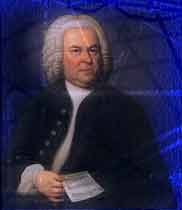In 1721 Bach dedicated a set of six concerti for diverse instruments to Markgraf Christian Ludwig of Brandenburg. At that time Bach was the resident Kapellmeister for Prince Leopold of Anhalt-Cöthen, and was in the midst of composing some of his best -known instrumental works. The “Brandenburg Concerti” are indeed a remarkable collection, each featuring unique combinations of instruments.
His Concerto No. 1 is noteworthy for featuring two “hunting horns” – the first ever use of horns in such a work. Together with the horns, this work features three oboes, bassoon, solo violin and strings. It has four movements (the only Brandenburg concerto to have that many).
The opening allegro is filled with counterpoint among the horns, oboes, strings and solo violin. The melodious second movement features solo passages in canon between the solo oboe and solo violin. A lively third movement follows, with robust orchestral passages offset by solos. The fourth movement is unique, with an opening menuetto for full ensemble; a trio featuring oboes and bassoon; a “Polacca”, or formal polonaise, section played by the strings; and a second trio featuring horns and oboes.
Brandenburg Concerto No. 1 in F Major
BWV 1046
Composed in 1721
By Johann Sebastian Bach





